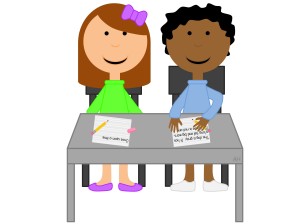I often stress the imporance of teaching counting first when working on math skills, before moving on to other number sense activities. So, this morning I wanted to provide a counting activity for all of those parents in need of more ideas.
I LOVE children’s books because it is such a great way to introduce a concept. Books are so great for children because they have such great illustrations to provide visual cues.
SO the first aspect of this activity is to read a counting book (order one or go to the library and pick up a few). Modify this activity depending on the book you choose, but this is the way I recommend: 1) Read 2) Practice in a hands-on way 3)Practice by drawing/recording.
My example for today’s activity is “Mouse Count” by Ellen Stoll Walsh.
Read the book with emphasis, counting the mice with your child, “1,2,3…”, at each opportunity.
After reading the book, find a jar, cup, tupperware, or anything that you could pretend is the jar in the book. Then find mice cat toys, rubber mice, or use ANY kind of counter (cubes, marbles, etc.) that you could pretend are the mice in the book. Practice counting out “mice” one at a time as you place them in the “jar.”
Now that you have read and shared in a hands-on reinactment of the story, if your child is ready, you are going to draw “mice” (or circles) for each numbered jar on the handouts attached. When they finish, cut along the table lines, put them in order (with your child) and staple them together to make a book 🙂
If your child is not ready for the structure of the handout, give him/her a blank sheet of paper and show them a page of the book and see if they can represent one part of the story (one number). Sometimes you have to start off SLOW, one number at a time.

